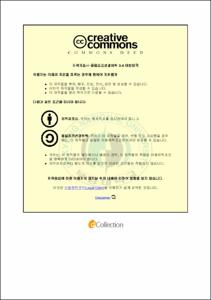The optimum feeding rate and frequency at the different water temperatures to set up the database of the computer feeding program in Korean rockfish, Sebastes schlegeli
- Abstract
- Two feeding rates and one feeding frequency studies were conducted to determine the optimum feeding rate and frequency at the different water temperatures to set up the database of the computer program in Korean rockfish, Sebastes schlegeli. In the first feeding rate study, juvenile Korean rock fish averaging 5.5±0.2 g (mean±SD) reared two temperatures at 17℃ with the feeding rate of 2.8, 3.8, 4.1, 4.4, 4.7 %, and satiation (4.9% BW day-1); and also reared at 20℃ with the feeding rate of 2.8, 3.8, 4.1, 4.4, 4.7%, and satiation (5.0% BW day-1). In the 2nd feeding rate study, fish averaging 16.0±0.3 (mean±SD) reared at 16℃ with the feeding rate of 1.5, 2.5, 2.8, 3.1, 3.4%, and satiation (3.7% BWday-1); at 20℃ with the feeding rate of 1.9, 2.9, 3.2, 3.5, 3.8% and satiation (4.1% BWday-1); and at 24℃ with the feeding rates of 1.7, 2.7, 3.0, 3.3, 3.6%, and satiation (3.9% BWday-1). In the feeding frequency study, growing Korean rock fish averaging 92.2±0.7 g (mean±SD) reared at 15℃ and fish averaging 100.2±0.4 g (mean±SD) reared at 19℃ with the 5 different feeding frequencies; one meal in a day at 08:00 hour, two meals a day at 08:00 and 17:00 hours, three meals a day at 08:00, 14:00 and 20:00 hours, four meals a day at 08:00, 12:00, 16:00 and 20:00 hours, and one meal every 2 days at 08:00 hour. In this study, fish were fed by the optimum feeding rate 1.0% BW day-1 at 15℃ and 1.4 % BW day-1 at 19℃ except the satiation feeding group of 1 meal every 2 days (Satiation 1.2% BW day-1 at 15℃ and 1.5% BW day-1 at 19℃). Broken line regression analysis of weight gain indicated that the optimum feeding rate of 5 g juvenile Korean rockfish was 4.48% (BW day-1) at 17℃ and 4.83% (BW day-1) at 20℃. The optimum feeding rate (by broken line) of 16 g juvenile Korean rockfish was 3.41% (BW day-1) at 16℃, 3.75% (BW day-1) at 20℃ and 3.34% (BW day-1) at 24℃. Feeding frequency of one meal a day is optimum for the improvement of weight gain in growing Korean rockfish grown from 92 g to 133 g at 15℃, and from 100 g to 132 g at 19℃. Moreover, the optimum feeding rates and optimum feeding frequency were used to set up the database of the computer feeding program in Korean rockfish. This program could be run by using the hypothetical values for fish size and number of fish, and for selected preset temperatures.
- Issued Date
- 2014
- Awarded Date
- 2014. 8
- Type
- Dissertation
- Publisher
- First Data (www.firstdatacorp.co.kr)
- Affiliation
- Pukyong National University
- Department
- 대학원 수산생물학과
- Advisor
- Sungchul C. Bai, Professor
- Table Of Contents
- Table of Contents
Table of Contents ………………………………… i
List of tables………………………………………… iii
List of figures………………………………………… vi
Abstract………………………………………………… viii
Chapter 1. General Introduction
1
Chapter 2. Effects of feeding rates in 5 g of juvenile
Korean rockfish, reared at the different temperatures 8
I. Introduction 8
II. Materials and methods 10
III. Results 13
IV. Discussion 23
V. Conclusion 24
Chapter 3. Effects of feeding rates in 16 g of juvenile
Korean rockfish, reared at the different temperatures 27
I. Introduction 27
II. Materials and methods 29
III. Results 33
IV. Discussion 49
V. Conclusion 53
Chapter 4. The optimum feeding frequency in 92 and
100 g of growing Korean rockfish, reared at the
different temperatures 54
I. Introduction 54
II. Materials and methods 55
III. Results 59
IV. Discussion 70
V. Conclusion 77
Chapter 5. General discussion and conclusion 78
I. General discussion 78
II. Conclusion 79
Acknowledgment 81
References 82
Appendix (Raw data) 93
Published papers from thesis 100
- Degree
- Doctor
- Files in This Item:
-
-
Download
 The optimum feeding rate and frequency at the different water temperatures to set up the database of.pdf
기타 데이터 / 1.22 MB / Adobe PDF
The optimum feeding rate and frequency at the different water temperatures to set up the database of.pdf
기타 데이터 / 1.22 MB / Adobe PDF
-
Items in Repository are protected by copyright, with all rights reserved, unless otherwise indicated.